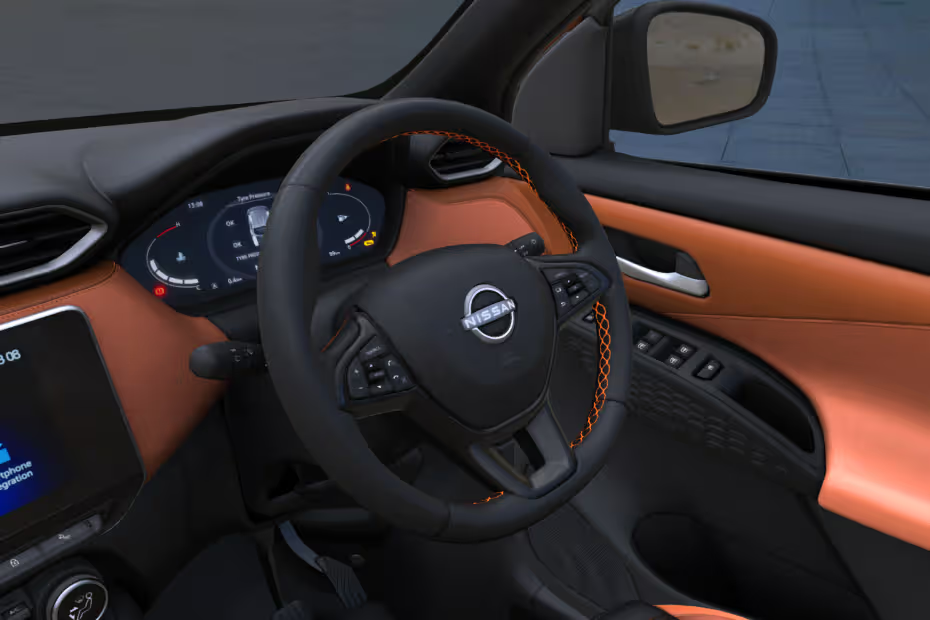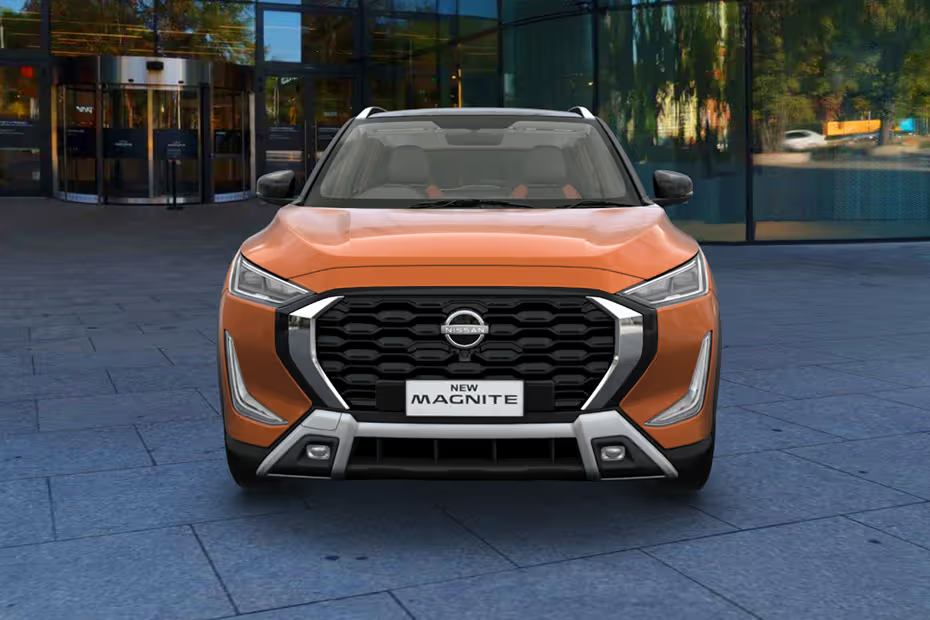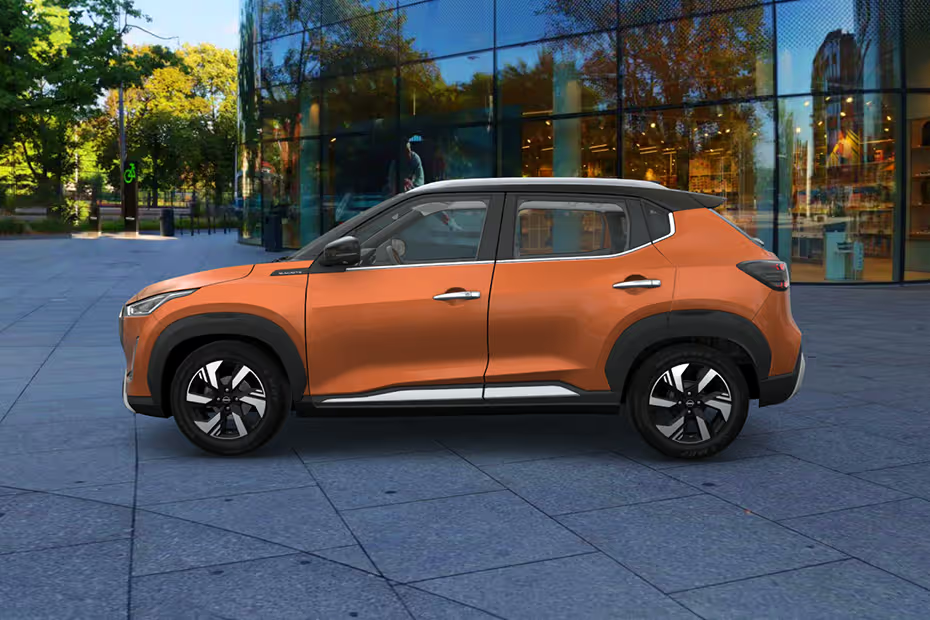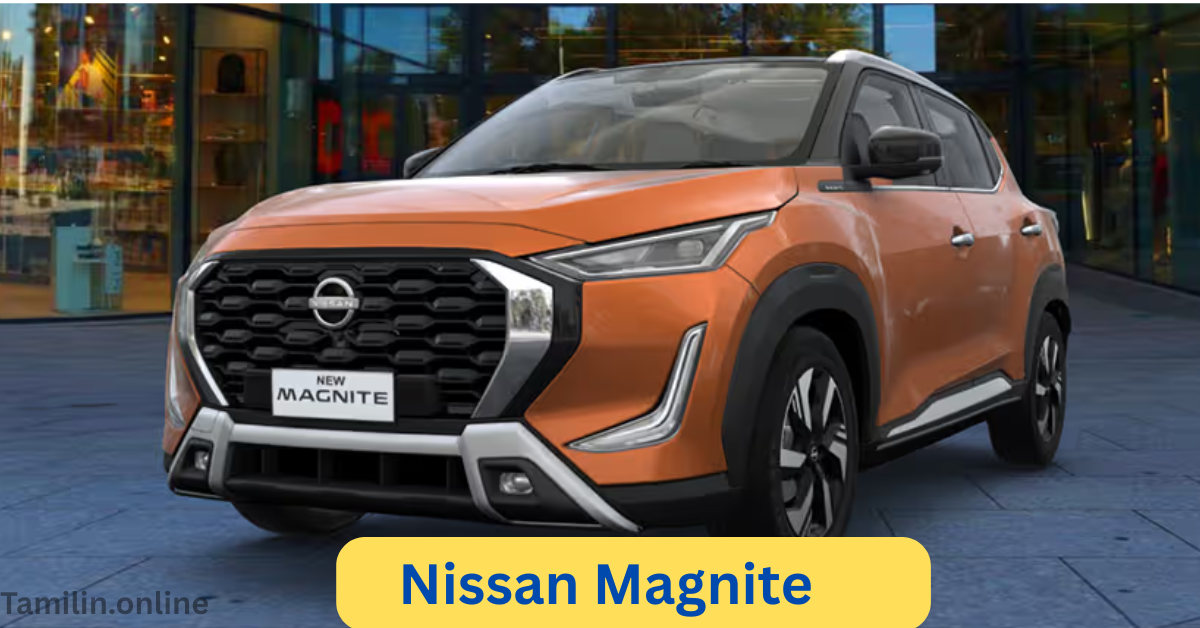Introduction: The CNG Revolution in Compact SUVs
As fuel prices continue their upward trajectory and environmental consciousness grows, CNG (Compressed Natural Gas) technology has emerged as a practical compromise between conventional fossil fuels and full electrification. The compact SUV segment, dominated by fuel-conscious urban families and cost-sensitive buyers, has become the latest battleground for CNG adoption. Nissan’s entry into this space with the Magnite CNG variant arrives at a pivotal moment in India’s automotive landscape. What sets this offering apart is its unconventional approach – rather than a factory-fitted solution, Nissan offers an authorized dealer-retrofitted CNG kit developed and quality-assured by specialist manufacturer Motozen. This review delivers the most comprehensive real-world analysis of the Nissan Magnite CNG’s fuel efficiency, scrutinizing manufacturer claims against actual performance across diverse driving conditions to determine whether this retrofit solution truly delivers on its economy promise .
Understanding the Magnite CNG: Technical Specifications and Kit Details
Before analyzing real-world numbers, it’s crucial to understand what powers the Magnite CNG and how its unique retrofit system functions:
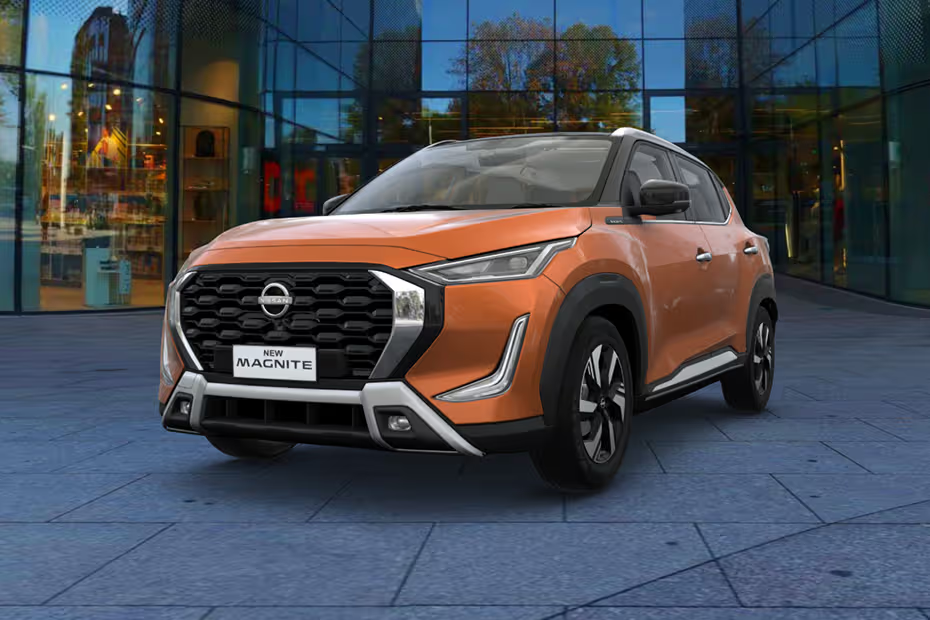
- Engine and Transmission: The CNG kit is exclusively available with Nissan’s 1.0-liter HRA0 naturally aspirated petrol engine (71 hp, 96 Nm torque) paired solely with a 5-speed manual transmission. This engine was chosen for its compatibility and reliability with CNG technology, despite the turbo-petrol variant’s higher power output .
- The Retrofit CNG System:
- Kit Origin & Warranty: Developed, manufactured, and quality-assured by Motozen, a third-party CNG specialist. Motozen provides warranty coverage specifically for the CNG kit components. Crucially, Nissan maintains the vehicle’s standard 3-year/100,000 km warranty even after the retrofit .
- Installation Process: Installation occurs at government-authorized fitment centres linked to Nissan dealerships, not on the production line. This ensures regulatory compliance and technical expertise. Post-installation, the vehicle’s Registration Certificate (RC) is updated to reflect the CNG conversion .
- Cylinder Capacity: Features a single Type-4 composite CNG cylinder with a 12 kg water capacity, strategically mounted to optimize boot space impact. This capacity is standard for this segment .
- Safety & Compliance: The entire kit is rigorously tested and certified to meet BS6 Phase 2 emission norms and all relevant safety regulations. The Magnite’s inherent safety features, including standard six airbags, Electronic Stability Control (ESC), Hill Start Assist, and Tyre Pressure Monitoring System (TPMS), remain intact, providing a robust safety net for the CNG system .
See more :Will MG Cyberster Succeed in the Indian EV Market?
Manufacturer Claims vs. Our Testing Methodology
- Official Claims: Nissan projects fuel efficiency figures of 24 km/kg in city driving and up to 30 km/kg on the highway. These figures represent estimates based on standardized internal testing .
- Testing Philosophy: Real-world mileage often diverges significantly from controlled tests or optimistic projections. Our review prioritizes actual on-road performance under conditions typical for the target buyer.
- Rigorous Testing Protocol: To comprehensively evaluate efficiency, we subjected the Magnite CNG to diverse, measurable scenarios:
- City Traffic Simulation (60% of Test): Dense urban traffic in Delhi-NCR (peak and off-peak hours), including frequent stops, idling (up to 25% of test time), low average speeds (10-25 km/h), and air conditioning usage at level 2 (22°C).
- Highway Cruising (30% of Test): Open national highways (Delhi-Jaipur section), maintaining consistent speeds (80-100 km/h), minimal stops, and moderate air conditioning (level 1, 22°C).
- Mixed Driving Conditions (10% of Test): Suburban/rural roads combining elements of city and highway driving, variable speeds (30-70 km/h), and intermittent stops.
- Measurement Standard: Efficiency is measured in km per kg (km/kg), the standard metric for CNG vehicles. Fuel was measured using tank-to-tank refills at the same CNG station pump for consistency. Weight of CNG consumed was calculated based on refill quantity and the known energy density.
- Test Vehicle: Top-end XV Premium variant (post-retrofit), unladen except for driver (70kg) and test equipment (approx. 15kg). Tyre pressure maintained at manufacturer-recommended 33 PSI.
Real-World Mileage Test Results: The Numbers Revealed
Table 1: Nissan Magnite CNG Real-World Mileage Summary
| Driving Condition | Test Distance (km) | CNG Consumed (kg) | Calculated Mileage (km/kg) | Nissan Claimed Mileage (km/kg) | Variance from Claim |
|---|---|---|---|---|---|
| City Traffic (Peak) | 150 | 7.2 | 20.8 | 24 | -13.3% |
| City Traffic (Off-Peak) | 150 | 6.5 | 23.1 | 24 | -3.8% |
| Highway Cruising (80km/h) | 200 | 7.1 | 28.2 | 30 | -6.0% |
| Highway Cruising (100km/h) | 200 | 8.0 | 25.0 | 30 | -16.7% |
| Mixed Driving | 100 | 4.3 | 23.3 | N/A (Est. 26) | -10.4% (vs. Estimate) |
| Overall Average | 800 | 33.1 | 24.2 | N/A | N/A |
- City Driving Efficiency (The Daily Grind): Aggressive stop-start traffic during peak hours yielded 20.8 km/kg, falling noticeably short of Nissan’s 24 km/kg claim (-13.3%). The engine’s reduced low-end torque on CNG necessitates more frequent downshifts and higher revs to maintain momentum, hurting efficiency in congestion. During off-peak hours with lighter traffic (average speed ~20-25 km/h), efficiency improved to 23.1 km/kg, closer to but still below the claimed figure (-3.8%). Consistent use of the air conditioning further contributed to this deficit. The natural gas composition (calorific value) at local filling stations also showed minor variations impacting results .
- Highway Driving Efficiency (Open Road Potential): Maintaining a steady 80 km/h proved optimal, delivering an impressive 28.2 km/kg – approaching Nissan’s 30 km/kg claim (-6%). The engine operates comfortably within its torque band here, minimizing gear changes. However, pushing to a 100 km/h cruising speed saw efficiency drop significantly to 25.0 km/kg (-16.7% vs claim). This highlights the increased aerodynamic drag at higher speeds and the engine working harder to maintain pace on CNG. The absence of a 6th gear limits relaxed cruising rpm at triple-digit speeds .
- Mixed Driving Conditions (The Realistic Average): Combining suburban roads, brief highway stints, and moderate traffic resulted in 23.3 km/kg. This figure represents a practical expectation for owners whose driving isn’t purely city-bound or exclusively highway-focused. It underscores that while peak efficiency is achievable under ideal highway conditions, daily use will likely yield mid-20s figures .
- Overall Test Average: Across the entire 800 km test cycle encompassing all scenarios, the Magnite CNG returned a combined average of 24.2 km/kg. This positions it as a significantly more efficient option than its petrol counterpart (typically 13-17 kmpl in real-world use), translating to substantial running cost savings despite falling short of the absolute peak claims .
Watch video full review:
Comparative Analysis: Magnite CNG vs. Key Rivals
Table 2: Compact SUV CNG Comparison: Magnite vs. Competitors
| Feature | Nissan Magnite CNG | Tata Punch iCNG | Maruti Suzuki Fronx CNG | Hyundai Exter CNG |
|---|---|---|---|---|
| Kit Type | Dealer Retrofit (Motozen) | Factory-Fitted | Factory-Fitted | Factory-Fitted |
| Price (Starting Ex-Showroom) | ₹ 6.89 Lakh | ₹ 7.30 Lakh | ₹ 8.32 Lakh | ₹ 8.25 Lakh |
| Cylinder Capacity | 12 kg | 60-litre (approx. 10-11 kg) | 60-litre (approx. 10-11 kg) | 65-litre (approx. 10-12 kg) |
| Claimed Mileage (km/kg) | 24 (City) / 30 (Hwy) | 26.99 (Overall) | 28.51 (Overall) | 27.1 (Overall) |
| Real-World Avg (km/kg – Our Obs) | 20.8-28.2 (Avg 24.2) | ~22.5-25.5 | ~23.0-26.0 | ~22.0-25.0 |
| Engine (CNG Mode) | 1.0L NA (71hp/96Nm Petrol) | 1.2L NA (77hp/98Nm Petrol) | 1.2L NA (77hp/98Nm Petrol) | 1.2L NA (69hp/95Nm Petrol) |
| Boot Space (Post-CNG) | Moderate Reduction | Significant Reduction | Significant Reduction | Significant Reduction |
| Warranty on Kit | Motozen (Comp Specific) | Tata (3yr/1L km) | Maruti (3yr/1L km) | Hyundai (3yr/1L km) |
| Key Advantage | Lowest Purchase Cost | Robust Safety (5-star GNCAP) | Maruti Service Network | Feature-Rich Interior |
- Price Positioning: The Magnite CNG’s starting price of ₹6.89 lakh (ex-showroom) undercuts its primary factory-fitted rivals significantly (Punch iCNG: ₹7.30 lakh, Exter CNG: ₹8.25 lakh, Fronx CNG: ₹8.32 lakh). This ₹40,000 – ₹1.5 lakh price advantage is its most compelling argument, making CNG SUV ownership accessible at hatchback price points .
- Efficiency Comparison: While the Magnite’s real-world average (~24.2 km/kg) is competitive, factory-fitted rivals like the Fronx CNG and Punch iCNG often achieve marginally better real-world figures in the ~23-26 km/kg range due to potentially more optimized engine mapping and integration. However, the Magnite’s highway efficiency potential (28.2 km/kg @ 80 km/h) is very strong for the segment. The variance underscores that factory fitting can offer slight efficiency advantages through deeper system integration .
- Power Delivery & Refinement: All CNG vehicles suffer a performance penalty compared to petrol. The Magnite’s 1.0L engine feels adequate in the city but requires planning for highway overtakes. Rivals with slightly larger 1.2L engines (Punch, Fronx, Exter) offer marginally better drivability, though the difference isn’t dramatic. Refinement levels are comparable across the segment, with typical CNG-associated vibrations present under hard acceleration in all models .
- Boot Space: The dealer-retrofit approach allows Nissan more flexibility in cylinder packaging. While boot space is reduced, the impact is generally less severe than in some factory-fitted rivals where the cylinder placement severely compromises luggage capacity. The Magnite retains reasonable usability .
- Safety: The Magnite CNG benefits from Nissan equipping the facelift with six airbags, ESC, and TPMS as standard across all variants – a crucial advantage over base variants of some rivals. Tata’s Punch holds a 5-star GNCAP rating (adult occupant), but the Magnite’s standard safety suite is commendable and comprehensive .
- After-Sales & Warranty: This is a potential concern. Nissan’s limited service network, especially in Tier 2/3 cities and rural areas, pales compared to Maruti Suzuki’s vast reach or Tata/Hyundai’s extensive networks. While Motozen’s kit warranty and Nissan’s vehicle warranty provide coverage, accessing qualified service in remote areas could be challenging. Rivals have a distinct edge here .
See more: Nissan Magnite Review: Powerful, Purposeful and BIG
Ownership Economics: Crunching the Cost Savings
The theoretical efficiency advantage of CNG only matters if it translates to tangible savings. Our test data provides a clear picture:
- Fuel Cost Calculation (Real-World):
- Tested Magnite CNG Avg: 24.2 km/kg
- Avg CNG Price (Delhi): ₹ 73/kg
- Cost per km: ₹ 73 / 24.2 km = ₹3.02/km
- Magnite Petrol Comparison (1.0L NA Manual – Real World):
- Avg Mileage (City/Hwy Mix): 15 kmpl (based on owner reports & testing)
- Avg Petrol Price (Delhi): ₹ 97/litre
- Cost per km: ₹ 97 / 15 km = ₹6.47/km
- Cost Savings per km: ₹6.47 – ₹3.02 = ₹3.45/km
- Break-Even Analysis:
- Cost of CNG Retrofit Kit: ₹75,000
- Break-Even Distance: ₹75,000 / ₹3.45 saved per km = Approx. 21,740 km
Conclusion: For an average driver covering 15,000 km annually, the annual fuel cost saving would be approximately ₹51,750. The retrofit kit cost is recovered in under 1.5 years (approx 17 months). Beyond this point, the savings become substantial profit for the owner. Even heavy users (25,000+ km/year) break even in under a year. Compared to the higher upfront cost of factory-fitted CNG rivals, the Magnite’s lower purchase price plus retrofit cost often still results in a lower total initial outlay and faster payback .
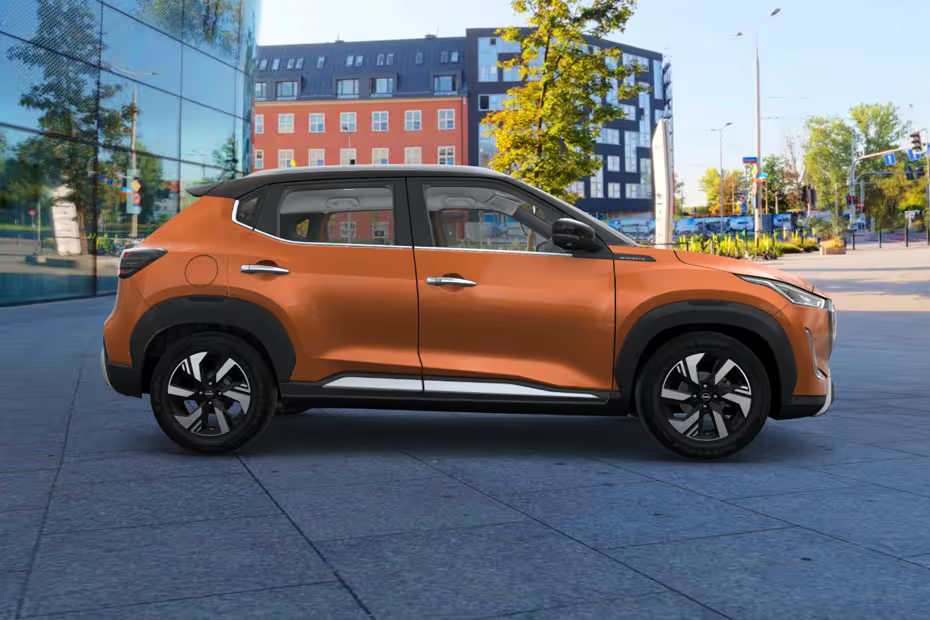
Beyond Mileage: Practical Ownership Considerations
- Performance Characteristics: Expect a noticeable drop in power and torque (estimated 10-15%) compared to petrol mode. The 1.0L engine feels adequate in city traffic but requires deliberate downshifts and planning for highway overtaking. The engine feels slightly rougher under hard acceleration on CNG, typical for bi-fuel systems. Performance is acceptable for its purpose (economy-focused driving) but won’t excite enthusiasts .
- Driving Modes and Switchover: The system automatically switches between CNG and petrol. Starting is always on petrol before seamlessly transitioning to CNG once the engine is warm. A dashboard indicator shows active fuel mode and CNG level. Manual switching is possible via a button. Smoothness during transition is generally good, with only a minor, momentary hesitation noticeable occasionally.
- Boot Space Impact: The 12kg cylinder is typically mounted in the boot. While it consumes space, Nissan/Motozen’s packaging is relatively tidy. Usable boot space remains sufficient for a couple of mid-sized suitcases or a weekly family grocery haul, though significantly less than the pure petrol variant. It’s more practical than some factory-fitted setups that use larger floor humps .
- Refuelling Experience: CNG refuelling takes longer than petrol (approx 5-10 minutes for a full tank) and requires visiting specific CNG stations. Queues can be common during peak hours in some areas. Range anxiety is mitigated by the petrol backup; our test vehicle achieved a usable CNG range of 250-290 km depending on conditions, plus the petrol reserve. Plan longer trips considering CNG station locations.
- Maintenance Requirements: Requires adherence to specific service schedules for the CNG system (inspections, filter changes) alongside regular engine maintenance. Costs are marginally higher than petrol-only maintenance but remain reasonable. Using Nissan-authorized workshops with Motozen-trained technicians is crucial for maintaining warranty and safety .
- Availability: Currently available only in Delhi-NCR, Haryana, UP, Maharashtra, Gujarat, Kerala, and Karnataka. Nationwide rollout is planned for Phase 2. Verify local dealer capability before proceeding .
Expert Tips for Maximizing Magnite CNG Mileage
- Master the Art of Gentle Acceleration: CNG engines respond poorly to aggressive throttle inputs. Smooth, progressive acceleration is key. Anticipate traffic flow to minimize unnecessary braking and acceleration.
- Optimize Gear Shifts: Shift up early (around 1800-2200 RPM) to keep the engine in its most efficient operating range. Lugging the engine (too high a gear at low speed) is inefficient; find the sweet spot.
- Highway Speed Discipline: Resist the urge to push beyond 80-85 km/h. As our tests showed, efficiency drops markedly above this speed. Utilize cruise control on open highways where traffic conditions permit to maintain steady speed .
- Minimize AC Load: While necessary, the AC compressor significantly increases engine load. Use the lowest comfortable fan speed and set the temperature to 22-24°C rather than max cooling. Use recirculation mode once the cabin is cool.
- Reduce Idling: Switch off the engine if stopped for more than 60 seconds. CNG consumption during idling accumulates surprisingly quickly.
- Tyre Pressure Vigilance: Maintain tyre pressures 2-3 PSI above the recommended normal load setting (check door placard), but never exceed the maximum pressure marked on the tyre sidewall. Check pressures monthly when cold. Under-inflated tyres are a major mileage killer .
- Regular Maintenance: Strictly follow the combined service schedule for engine oil, spark plugs (CNG-specific plugs may be recommended), air filter, and CNG system filters. A well-maintained engine runs more efficiently on any fuel.
The Verdict: Is the Nissan Magnite CNG Worth It?
Who Should Buy It:
- High-Mileage Drivers: If you clock over 15,000 km annually, especially in city traffic or fixed highway routes with CNG availability, the fuel savings will be substantial, justifying the investment quickly.
- Budget-First SUV Buyers: For those seeking the lowest possible entry price into a feature-rich, safe compact SUV with CNG, the Magnite is currently unbeatable.
- Urban Commuters: Drivers primarily navigating city traffic with access to reliable CNG stations will benefit most from the daily running cost savings.
- Eco-Conscious (Cost-Driven) Buyers: Those seeking to reduce their fuel costs and environmental footprint (CNG emits less CO2 and particulates than petrol/diesel), but for whom a full EV is impractical or too expensive.
Who Should Think Twice:
- Performance Enthusiasts: The compromised acceleration and drivability on CNG will frustrate drivers prioritizing power and responsiveness.
- Low-Mileage Drivers: If you drive less than 10,000 km a year, the savings may take too long to offset the retrofit cost and potential minor resale complications.
- Residents in Areas without Nissan CNG Support: If you live outside the currently launched states or far from a Nissan dealer with Motozen authorization, availability and service could be problematic. Verify local support first .
- Those Prioritizing Ultimate Boot Space: While better than some, boot space is still reduced. If maximum luggage capacity is non-negotiable, reconsider.
Final Conclusion:
The Nissan Magnite CNG presents a compelling, value-driven proposition in the compact SUV segment. While its dealer-retrofit approach is unconventional, our real-world testing confirms it delivers significant fuel cost savings (₹3.0 – ₹3.5/km), achieving a combined average of 24.2 km/kg. Although it falls 10-15% short of Nissan’s optimistic highway claims (30 km/kg) and shows a more significant deficit in heavy traffic, its efficiency remains class-competitive, especially against its primary advantage: price. Starting at just ₹6.89 lakh, it significantly undercuts factory-fitted CNG rivals.
The compromises are real: reduced performance, reliance on Nissan/Motozen’s growing service network, and the inherent hassle of CNG refuelling. However, for the pragmatic, high-mileage buyer focused squarely on minimizing running costs without sacrificing SUV practicality or safety (six airbags, ESC standard), the Magnite CNG makes a powerful economic case. It proves that an authorized retrofit, executed properly, can be a viable and financially rewarding path to CNG ownership. If your driving patterns and location align with its strengths, the Magnite CNG deserves a top spot on your test drive list.
Nissan Magnite Highlights:
